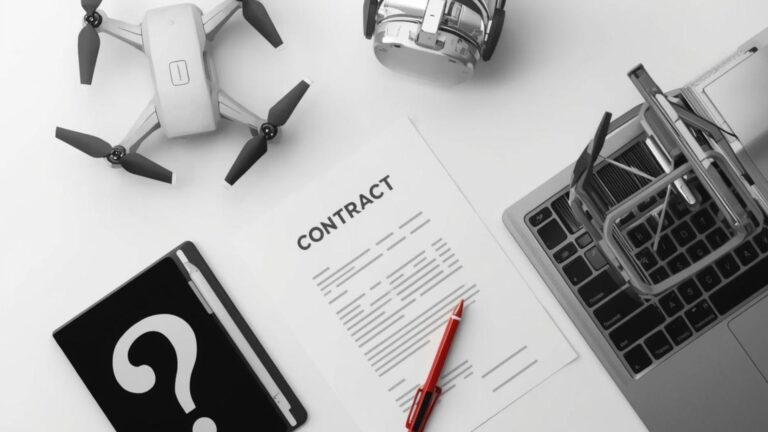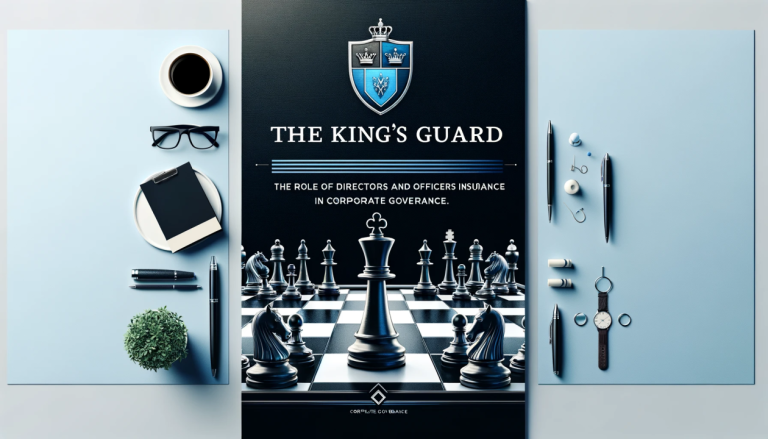In today’s business climate, company leaders can be held personally responsible for the decisions they make. Directors and Officers (D&O) insurance is the safety net that protects executives and board members if they’re sued over those decisions. For tech startups and established companies alike, D&O coverage isn’t just for Fortune 500 firms – it’s a crucial safeguard whenever you have investors, a board, or regulatory oversight. This article breaks down what D&O insurance is, why it’s important (especially in the fast-paced tech sector), who needs it, and how to approach securing the right coverage.
Why D&O Insurance Matters
The role of corporate directors and officers comes with heavy responsibility – and legal liability. If stakeholders believe that those at the helm have dropped the ball, they can seek to hold them accountable personally. Here’s why D&O insurance is so critical:
- Litigation risks for leaders: Shareholders or investors can sue if they feel misled or wronged by management decisions. In the U.S., shareholder lawsuits (including class actions) are relatively common; hundreds are filed each year, and they’re increasingly targeting smaller companies, not just giants. Even in Europe and other regions where class actions are rarer, regulators and investors are becoming more assertive in holding directors liable for failures in oversight (for example, in insolvency cases or for breaches of duties under laws like the UK Companies Act).
- Regulatory scrutiny: Company executives may face investigations by regulators (financial authorities, data protection agencies, etc.) if the company is accused of wrongdoing. These investigations often name individual officers. Without D&O, those individuals would have to fund their own defense in lengthy legal proceedings.
- Emerging risks and expectations: New challenges like cybersecurity, data privacy, and ESG (environmental, social, governance) mean directors have more ways to be on the hook. If a company suffers a data breach or is accused of greenwashing its environmental impact, its board might be sued for failing to prevent it or for misrepresentations. In fact, recent reports note that litigation is expanding to areas like AI misrepresentation and ESG disclosures– issues that put unwary directors in the crosshairs.
- Personal asset protection: Perhaps most fundamentally, D&O insurance exists to protect the personal assets (think homes, savings, etc.) of the people running the company. Without it, many qualified individuals would be hesitant to serve on boards, especially in startups or risky ventures, for fear that one lawsuit could bankrupt them.
What Does D&O Insurance Cover?
D&O insurance generally covers claims against the company’s directors and officers for alleged “wrongful acts” in their managerial capacity. A “wrongful act” is typically defined broadly – it can be any actual or alleged error, misleading statement, negligence, breach of duty, or omission by a director or officer in the course of their duties. In essence, if someone sues saying a decision or oversight by management caused harm (financial harm, primarily), the policy kicks in.
Here’s what that means in practice:
- Legal defense costs: If a lawsuit or regulatory action targets a director/officer, the D&O policy pays for lawyers to defend them (or reimburses the company if the company is advancing legal fees to that person). Legal expenses can run very high, especially in complex securities litigation or multi-year investigations, so this is a critical component.
- Settlements or judgments: If the case is resolved by paying a settlement to plaintiffs or a court awards damages, the policy will cover those amounts (after any deductible/retention), up to the coverage limit. For example, if shareholders sue and the case settles for $5 million, the D&O insurer will pay that (assuming the amount is within policy limits).
- Coverage for the company itself: Often, lawsuits name both the individual directors/officers and the company. D&O policies can cover the company’s liability in certain types of claims (especially securities lawsuits). In a public company, this is typically called “Side C” coverage. In private companies, D&O policies often bundle entity coverage for various claims as well.
- Investigation costs: Many D&O policies also cover costs associated with regulatory investigations, where no lawsuit is (yet) filed but legal counsel is needed to represent directors/officers during inquiries by regulators.
It’s worth noting that D&O insurance does not cover everything. It won’t cover bodily injury or property damage claims (those fall under general liability), nor will it cover fraud or criminal conduct (if a director is found to have deliberately engaged in illegal acts, insurance won’t pay in such cases). Most policies also exclude litigation between insiders (e.g., one director suing another) and disputes arising from personal profit or advantage to which the insured was not legally entitled. These fine print details underscore why working with an experienced broker is important – to ensure you understand the scope of coverage and any exclusions.
Who Needs D&O Insurance?
Any company that has a leadership team making decisions on behalf of others should strongly consider D&O insurance. This includes:
- Public companies: These are legally required in many cases to indemnify their directors and officers, and D&O insurance is essentially mandatory due to the high likelihood of shareholder lawsuits (public firms face frequent securities class actions).
- Venture-funded and private startups: If your startup is venture-backed, investors may require D&O insurance as part of the dea. Even if they don’t explicitly require it, having D&O is wise once you have outside investors or a formal board. It protects their interests and yours. Remember, a private company’s directors can be sued by minority shareholders, employees, customers, or competitors. In fact, a smaller business is often more financially vulnerable to such suits than a large one with deep pockets.
- Nonprofits and other organizations: Nonprofit board members have personal exposure too (for example, allegations of mismanagement of funds). D&O insurance is common in the nonprofit sector to ensure volunteer directors aren’t scared away by liability.
In short, size doesn’t matter – what matters is whether people could seek to hold your leadership accountable for the organization’s actions. If the answer is yes (and it almost always is), then D&O insurance is relevant. As one industry expert put it, it’s never really too early to get a D&O policy in place, because even routine business activities (signing contracts, hiring employees, pitching to investors) carry legal risk.
Getting the Right D&O Coverage
When purchasing D&O insurance, there are a few practical considerations to keep in mind:
- Coverage limits: D&O policies typically offer coverage in increments (e.g. $1 million, $5 million). The right limit depends on your company’s size, risk profile, and how much in claims you want to be protected against. High-growth or public companies often carry higher limits, but even a startup might start with $1–2 million and scale up as investors and exposures increase.
- Policy structure: As mentioned, D&O policies have different insuring agreements (often called Side A, B, C). You don’t necessarily need to micromanage these as an insured, but be aware: Side A protects individual directors when the company can’t indemnify them (for instance, in bankruptcy), Side B reimburses the company when it does indemnify them, and Side C covers the company itself (mainly for securities claims). A comprehensive D&O program will address all three. In some cases, companies purchase an additional Side A DIC (Difference-in-Conditions) policy as a backup for individual directors – this is more common for larger firms or where extra personal asset protection is needed for executives.
- Retentions (deductibles): D&O coverage often comes with a retention (the amount the company pays on a claim before insurance kicks in) for certain types of claims. Understand what your retention is and make sure it’s an amount the company can handle paying out in a pinch. Some coverages, like Side A, often have no retention because it’s protecting individuals directly.
- Exclusions and terms: Work with your broker to review key exclusions. Common exclusions might relate to fraud (usually excluded unless individuals are exonerated), pending litigation (claims already in process when you buy the policy won’t be covered), and certain insured-vs-insured claims (one insured suing another, which can be an issue if, say, a fired executive sues current executives – some policies give back coverage for employment-related internal claims). Also ensure coverage extends to all subsidiaries and new acquisitions if your company grows (or be ready to add them).
- Continuity and tail coverage: D&O is a claims-made coverage, so maintaining continuous coverage year-to-year is crucial. If you ever decide to discontinue the business or you get acquired, consider purchasing a run-off (tail) policy – this extends coverage for claims that arise in the future based on acts that occurred while you were insured. For example, if you sell your company, a tail policy will protect the old directors for a few years after the sale in case someone later sues over something that happened before the sale.
- Insurer selection: D&O claims can be complex and contentious. Choosing a reputable insurer with a strong track record in D&O claims handling is important. Price isn’t everything – a slightly more expensive policy from a stable insurer with expertise in tech sector risks might be a better choice than the cheapest option from a lesser-known carrier. Look for insurers with financial strength and those that are known for covering companies of your size/stage.
Because D&O is such a nuanced area, partnering with a knowledgeable broker is invaluable. They can help negotiate terms (like including specific coverage enhancements relevant to your business), and ensure you’re getting a fair deal in the market. Each year, you should review your coverage before renewal and update limits or terms if your situation has changed (for instance, after a big funding round or expansion to new countries).
Conclusion
Directors & Officers insurance gives your company and its leaders the freedom to make bold decisions without constantly looking over their shoulders in fear of personal liability. In the tech world, where rapid growth and new challenges are the norm, D&O coverage is a cornerstone of a solid risk management strategy. It reassures investors and board members that their interests are protected, and it ensures that if a serious allegation arises, the focus can remain on resolving the issue rather than worrying about how to pay for legal defense.
By demystifying D&O insurance – from what it covers to who needs it and how to secure it – we hope you can approach this aspect of your business insurance with clarity and confidence. The bottom line: if you have people guiding your company, D&O insurance is what keeps their ship (and yours) afloat when storms come.
Key Take-aways
- D&O = management liability protection: It covers claims against your company’s directors and officers for alleged wrongful acts in running the business, paying defense costs and settlements so those individuals aren’t personally bankrupted by lawsuits.
- Not just for big corporations: Small and private companies also face D&O risks. Investor-backed startups, in particular, should get D&O coverage early – often as a condition of investment – since even routine decisions can spark legal action.
- Covers a range of claims: From shareholder lawsuits to regulator investigations, D&O policies address many scenarios. However, they won’t cover intentional fraud or bodily injury claims (different policies handle those).
- Tailor coverage wisely: Work with experts to choose appropriate coverage limits, understand exclusions, and maintain continuous protection. Adjust your D&O coverage as your company grows or changes (e.g., approaching an IPO or acquisition).
What to do next
- Assess your governance risk: Take stock of your corporate structure and any potential points of contention (investors, compliance areas, past disputes). This will highlight why you need D&O and what scenarios concern you most.
- Integrate D&O into your insurance program: If you haven’t already, speak with a broker to get quotes for a D&O policy. Discuss add-ons like EPLI or fiduciary liability if they might suit your management liability needs.
- Educate your leadership: Ensure that your directors and officers know that coverage is in place (it may even be something you mention when recruiting board members). Make D&O a part of your broader risk management discussions so that everyone is aware of both the protections and the responsibilities (insurance doesn’t replace good governance).
- Review annually: Revisit your D&O coverage at each renewal. Changes like new funding, expansion into new markets, or taking steps toward going public can all warrant increasing limits or adjusting terms. Keep your policy aligned with your current reality.
For more insights on D&O risk and coverage costs, see our article on D&O insurance cost for a public company, or read our overview What is D&O and E&O Insurance to understand how D&O differs from other liability coverages.



















































































































